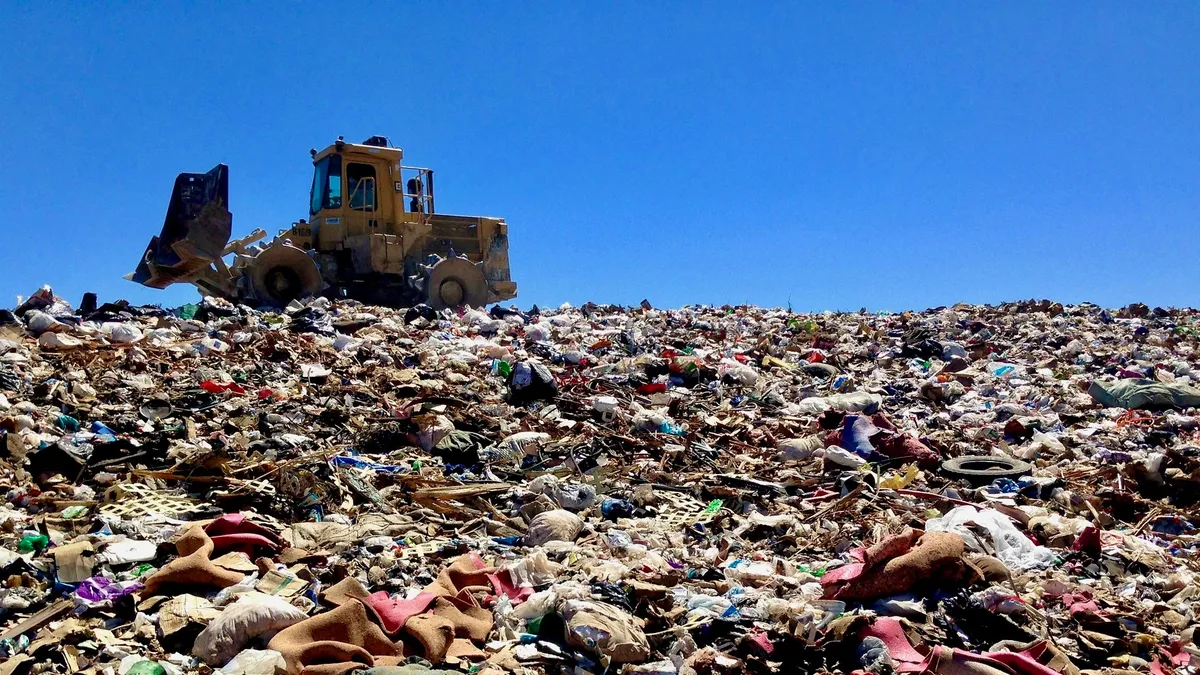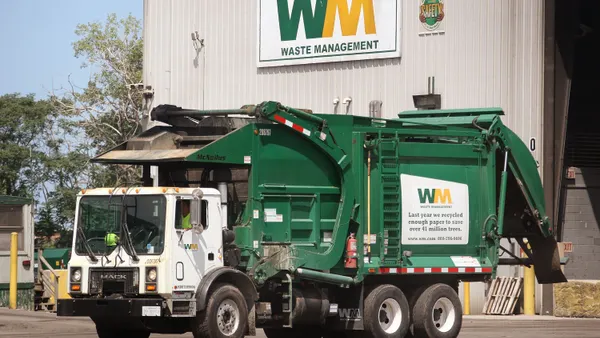Dive Brief:
- The United States is on track to have 18 years of remaining landfill capacity left in 2020, according to a new report from research firm Waste Business Journal (WBJ). Regional capacity estimates vary widely, from 10.5 years in the Northeast to 27.4 years in the West.
- This is a key factor in the ongoing trend of rising MSW tipping fees around the country, with the Northeast, Pacific and Midwest regions all above a national average of $52.20 in 2018. While the former two regions have long trended above national rates in WBJ's reports, the Midwest only surpassed it in the past decade.
- WBJ values the disposal business at 25% of revenue for the overall $76.4 billion waste and recycling industry. The public sector now accounts for 19% of that revenue – down from 35% in the early '90s – with the largest presence still in collection.
Dive Insight:
WBJ's latest annual report, a mix of new and previously released data derived from facilities around the country, offers an in-depth look at the implications of looming capacity crunches in certain areas. While permitted expansions and possibly even new sites can be expected to change that equation, they haven't kept up at the same pace to offset capacity losses in recent years. And even though some U.S. landfills still have many decades or more of space left, it is becoming increasingly complicated to export the waste to wherever that capacity may be.
The Northeast is still the only region with net waste exports, according to the report. And as the area's list of active MSW landfills continues to shrink – with minimal appetite for expansions, let alone new sites – it is widely expected this trend will continue. The Northeast's concentration of incinerators and other waste-to-energy facilities are also largely at capacity, with similar resistance to any expansions.
This has led to MSW tip fees at local landfills that are anywhere from $15 to $20 or more per ton than the national average, according to separate analysis by the Environmental Research & Education Foundation and WBJ. Yet the effects aren't isolated to the Northeast.
According to Jim Thompson, principal of WBJ, this is also starting to influence tip fees in the regions where Northeast waste is exported, because it takes up space that could otherwise be used for local tonnage. For the Northeast in particular, it is increasingly common to see waste exported to landfills in the Southeast and Midwest. Per the latest report, those two regions are the largest net importers in the United States. Incoming Canadian waste is also a factor for some northern states.
Amid a trend toward privatization on multiple fronts, this also plays a role in ongoing consolidation throughout the sector. As previously reported, a small number of public companies manage an estimated 60% of the nation's landfill capacity and WBJ's data indicates that trend will likely also be a factor in future acquisitions.
Private companies now own an increasingly smaller share of the nation's disposal capacity, but still have a larger presence on the collection side and could be affected by rising tip fees if their operations aren't vertically integrated.
“As the landfills get more scarce, the guys who own those landfills have a lot more power. They’re the gatekeepers," Thompson told Waste Dive. "And that power they could use to gain market share and force companies to sell out to them. That will be a further accelerant of the industry consolidation."
As for all of the recent public noise – and financial strain – around recycling, Thompson believes it is "overshadowing to a certain extent how vibrant the industry has been." According to WBJ's analysis, MRF and recycling operations account for around 7% of the industry's overall $76.4 billion activity.
Thompson also expects to see a more active focus on organics, which he views as "an area that’s been neglected for a long time." While organics processing just accounted for an estimated $320 million worth of activity in WBJ's latest analysis – much of that green waste and not food scraps – activity is on track to ramp up in states affected by dwindling disposal capacity and emerging regulations in the years ahead.












